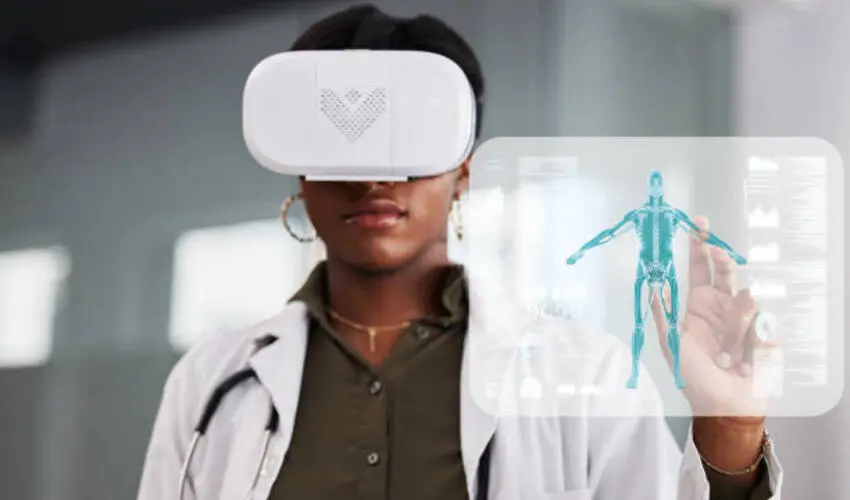A virtual assistant for medical practices can be defined as an AI-powered tool or virtual expert that assists healthcare companies, clinics, and doctors in managing patient engagement, clinical, and administrative tasks instead of being physically there in the workplace.
Introduction
The worldwide healthcare market for virtual assistants was projected to be 1.4B USD in 2024, which is expected to grow to 8.4B USD by 2032. The significance of virtual assistants for medical practices cannot be ignored.
Therefore, we are presenting to you the latest trends in virtual assistants for medical practice in 2025.
Incorporation of Electronic Health Records (EHR)
One of the most effective developmental techniques is the flawless incorporation of virtual assistants with EHR systems. This capacity permits VAs to upgrade and access patient records immediately. This organizes administrative workflows, which guarantees updated and precise data for clinicians. VAs that can function within EHR decrease manual data entry and enhance care efficiency.
Predictive, AI, and NLP Capabilities
Advancements in machine learning and artificial intelligence have boosted VA’s capabilities. Enhanced natural language processing (NLP) allows them to comprehend difficult medical questions, engage in natural conversational communications, and adapt over time through a learning algorithm. In addition, AI-powered predictive analytics assist in predicting patient requirements. This detects high-risk patients, anticipating readmission, and advising preventive measures.
Role Expansion Across Remote and Telehealth Care
The expansion of Telehealth has driven VAs into new roles. It includes the following up post-visit follow-up, providing technical support, and managing pre-visit preparation. A few VAs even play the role of silent participants in telehealth sessions, like simplifying the clinical workload and troubleshooting, and taking notes.
Automating Administration To Decrease No-Shows
Nowadays, more and more virtual assistants are managing routine admin-related burdens like patient follow-up, insurance verification, billing inquiries, reminders, and appointment scheduling. Therefore, the utilization of automated reminders can decrease the no-show rate up to 22%.
Improved Customization and Patient Engagement
Virtual Assistants are changing the way patients communicate. This includes personalized engagement, appointment logistics, and Q&A management. They can give medical reminders, distribute health tips, and implement follow-up messaging customized as per the patient’s requirements. Conversational AI improves this engagement. This yields 3 times more patient interaction in comparison to the old portal and emails.
Increasing Demand for Culturally and Multilingual Competent Support
The rising multilingual virtual assistants and cultural diversity are becoming extremely crucial. VAs that interact with patients’ preferred languages, like Spanish, enhance understanding and access. Some systems now offer immediate translation in more than 40 languages. Cultural competency training guarantees inclusive and effective patient communication.
The Increased Adoption of AI Scribes
Other than traditional virtual assistants, AI medical scribes are also called ambient and automated scribes. It is another major trend. These tools summarize and transcribe patient consultations. This decreases documentation burden.
Human-AI and Voice-AI Frameworks
Voice-driven VAs are becoming popular day by day. Popular clinics across the globe utilize voice-AI to manage insurance communication. This quadruples processing speeds and replaces more than 100 full-time staff. Similarly, remote administrative support frameworks leverage more than 1200 trained remote VAs to manage intake, insurance, and scheduling. This shows remarkable growth.
Conclusion
Virtual assistant technologies in medical practices are not just a trend. In fact, they are the major transforming force for care delivery. It includes EHR-integrated assistants reshaping patient engagement, voice capability, and reducing admin burden. These tools are organizing workflows and improving care.
Frequently Asked Questions (FAQs)
What is meant by a virtual assistant for medical practices?
A virtual assistant for medical practices can be defined as an AI-powered tool or virtual expert that assists healthcare companies, clinics, and doctors in managing patient engagement, clinical, and administrative tasks instead of being physically there in the workplace.
What are the five major trends in virtual assistants for medical practices?
- Incorporation of Electronic Health Records (EHR)
- Predictive, AI, and NLP Capabilities
- Role Expansion Across Remote and Telehealth Care
- Automating Administration To Decrease No-Shows
- Improved Customization and Patient Engagement
- Increasing Demand for Culturally and Multilingual Competent Support
- The Increased Adoption of AI Scribes
- Human-AI and Voice-AI Frameworks

